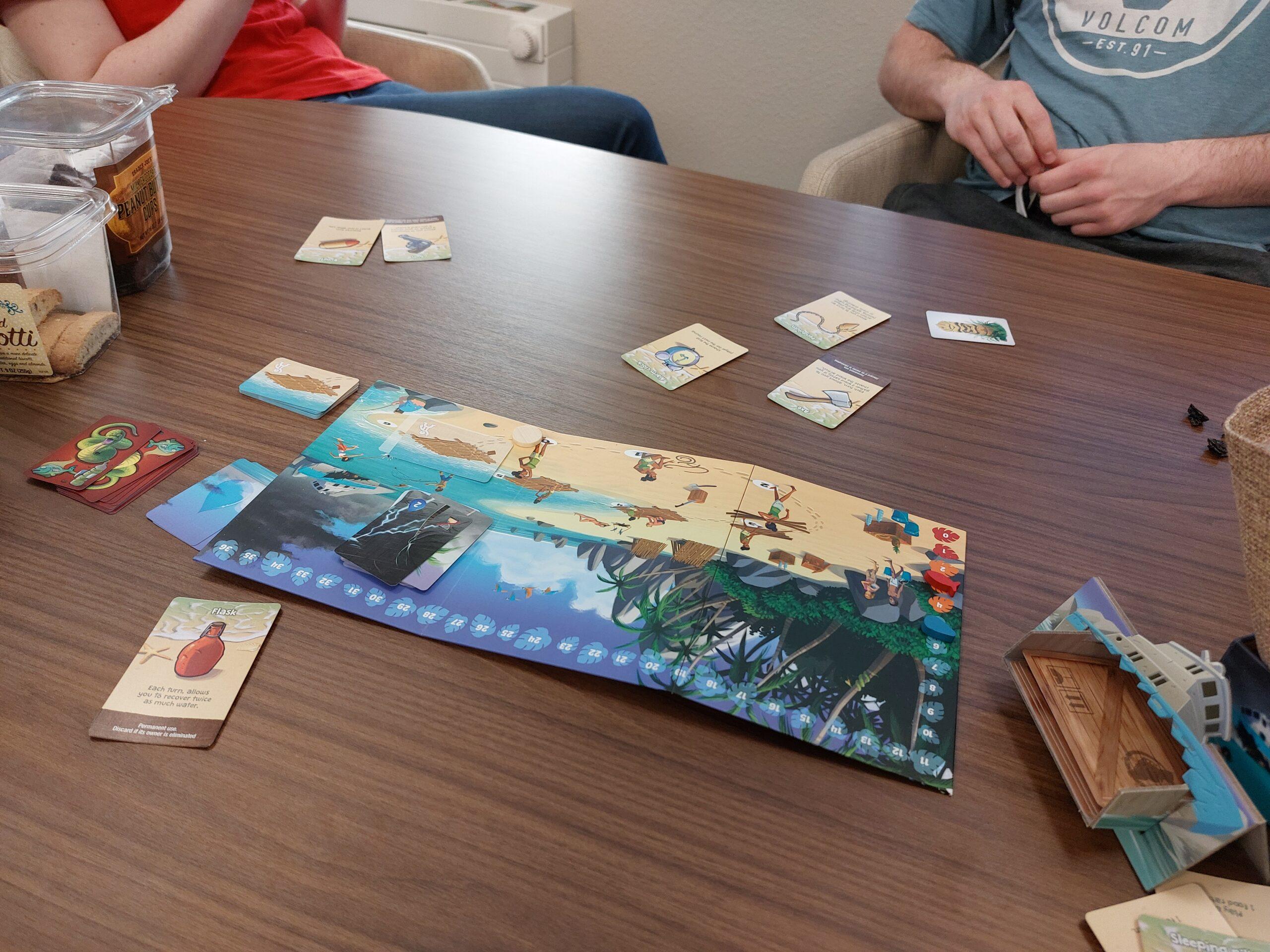My team is working on a game with a deserted island theme, so I found a social game named Hellapagos that is all about surviving on and escaping a deserted island. Hellapagos is a board game designed by Laurence Gamelin and Philippe Gamelin, with art created by Jonathan Aucomte. The game can be played by anyone 10 years old or older in just about any kind of setting (parties, work, family, etc) since the materials and concepts are relatively family friendly. The number of players for this game ranges from 3 to 12, and each game lasts about 20 minutes.
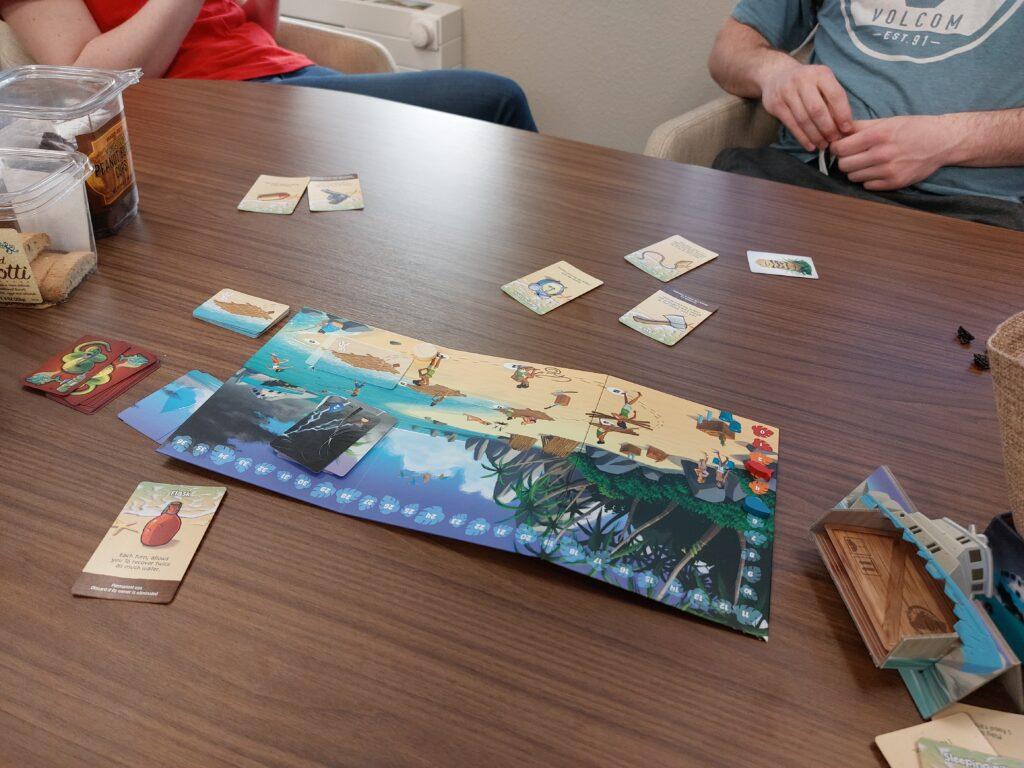
The theme of the game is island survival and escape, and the gameplay has a very interesting mix of player cooperation and competition, which I will discuss more in my analysis. I will talk about how the formal elements of players, procedures, objectives, resources, conflicts, and outcome create such an interesting tension between cooperation and competition in this game.
The types of fun this game intends to provide its players are fellowship and challenge, with a hint of fantasy. The fellowship type of fun stems from the players both working together and against each other. In Hellapagos, players start out cooperating with each other in a “players v. game” setup (players element), as all players are placed on a deserted island and must perform actions (procedures element) to ensure there is enough food supply while making progress towards building rafts (resources and objectives elements) that would allow players to escape (objectives and outcome elements). The reason why players start out cooperating with each other is that each player is only able to perform one of 4 actions (collect water, fish for food, draw a wreckage item, or collect wood to build a raft) in each round, and there needs to be enough water and food each round for players to survive as well as one raft for each player to escape. This is where the challenge type of fun comes in. If players don’t coordinate their actions, not much progress can be made towards the escape. The players have between 6 and 12 rounds (determined by chance) to finish building enough rafts for all players to escape. However, while it is possible that all players get to escape at the end, it is more often the case that some resource runs out in earlier rounds. When this happens, the game quickly becomes a competitive game where each player tries to save themself from being eliminated, either by voting a player out or using a gun to directly kill a player (and taking over their item cards).
I believe that the game very much succeeds in promoting the fellowship and challenge types of fun with the above-mentioned formal elements design, because the interesting mix of cooperation and competition creates a kind of social dynamic that is full of surprises and complexity. For example, in order to increase the chance of survival and escape, a play may hide the fact that they drew a gun card which would later enable them to surprise all other players by shooting a player, when the group has to vote to eliminate a player due to supply or raft shortage. Since players have to individually plan for their ultimate survival and escape, everyone can have hidden agendas while appearing to cooperate with each other until there isn’t enough resources for all players to survive.
While the game instructions openly suggest that players deceive each other to ensure individual survival, the procedure and resource elements of the game are set up such that single players are not able to abuse their powers by deception or other means. This is because all players need the same types and amounts of resources to survive, and players are only eliminated by majority votes or a bullet (which requires a gun to be used with and it’s not easy to get). The power dynamics in the game are balanced well enough that abuse is unlikely.
I also really enjoyed the hint of fantasy in this game, as the item cards are designed with humor and allow you to imagine what you might be faced with on a deserted island, and what sorts of items you might wish you have. The graphic design is done very well for this game as the humorous style suggests that the game is a light-hearted social game, where players get to fool around and have fun while trying to reach their goal.
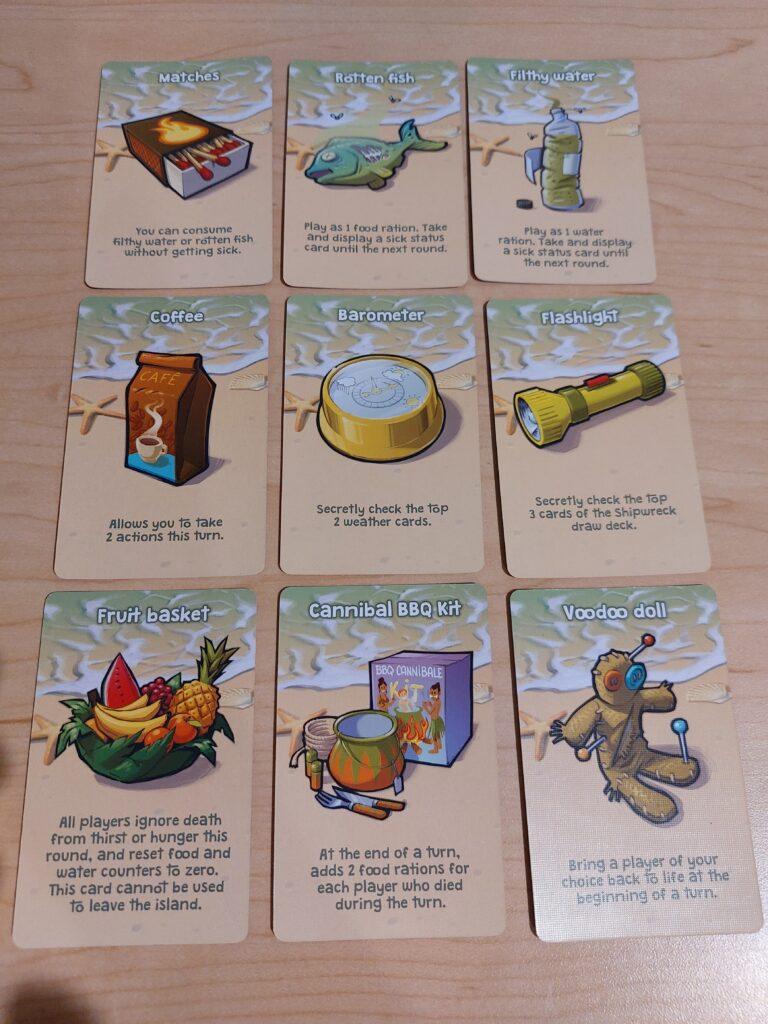
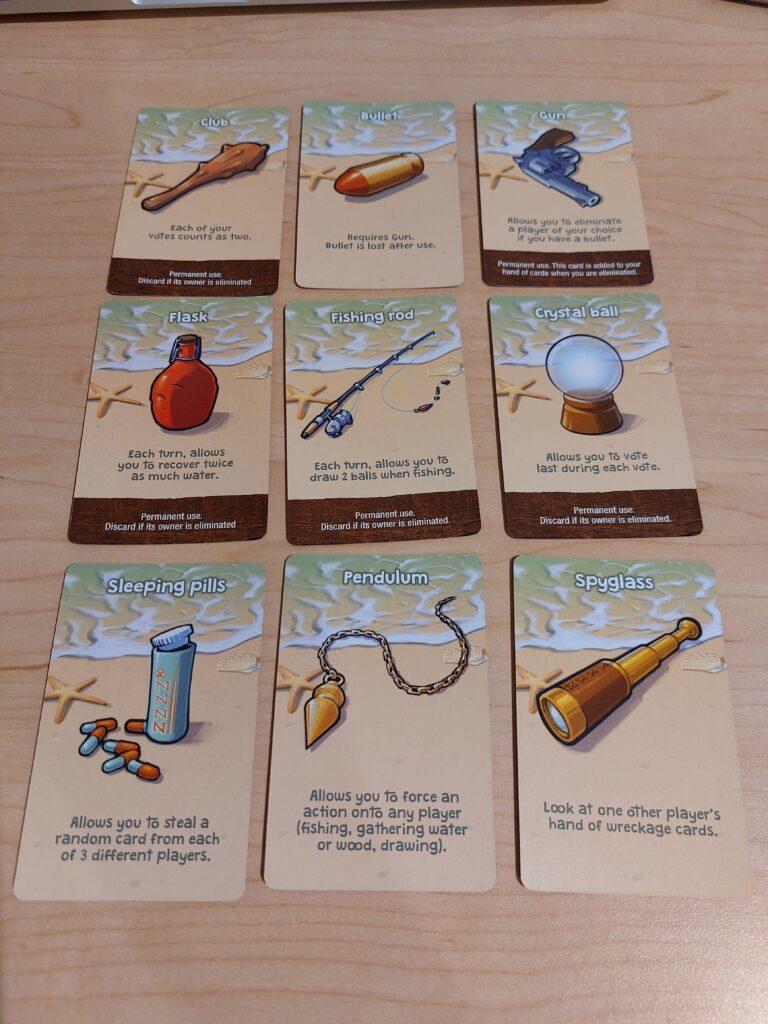
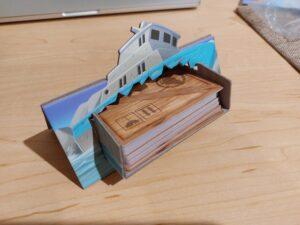
[above three photos show some of the interesting wreckage item cards and the very cool wreckage item card holder]
Other games that I know of with somewhat similar game element designs are Pandemic (players, objectives, and outcome are set up such that players work to win/survive together against the game), and Escape from Atlantis (objectives, resources, conflicts are set up such that players are faced with dilemmas and might have to sacrifice others in order to survive). However, neither of these games have this interesting mix of competition and cooperation between the players that happen in Hellapagos.
Although I absolutely enjoyed playing this game and would love to bring it to a party to play with a bigger group, I do wish that the “bluffing” element of the game can be better designed or supported. The game instructions say that bluffing can be useful to help coerce other players to trade item cards with you, possibly by using the “useless” item cards (which are very funny but really just useless).
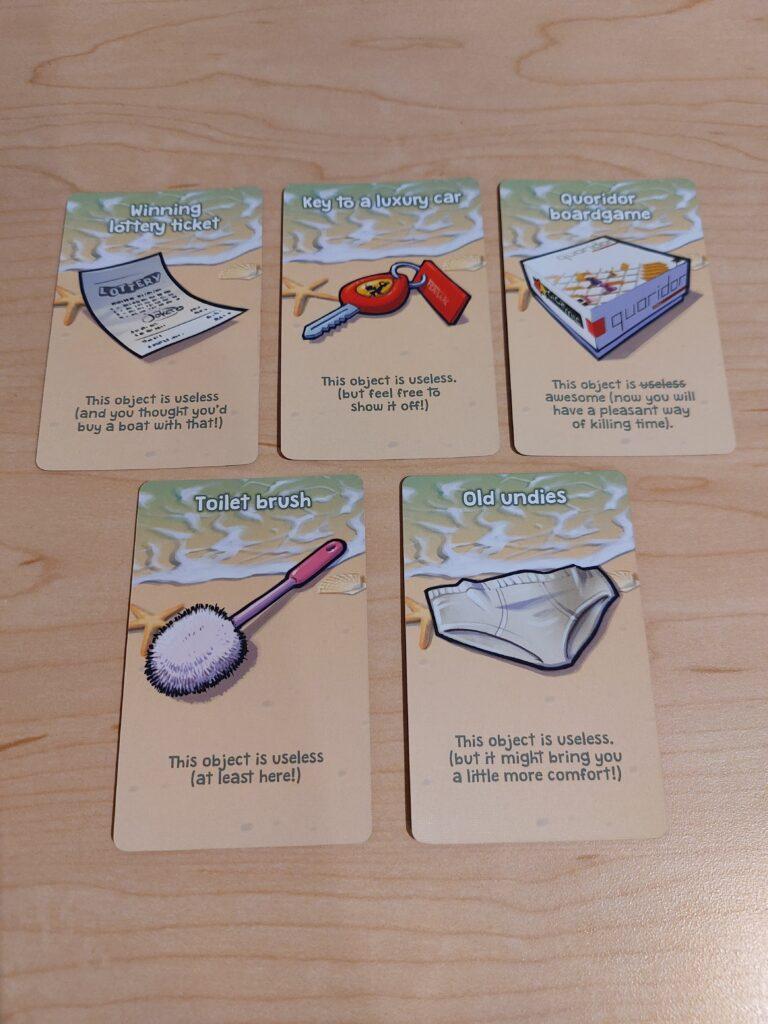
[this photo shows the funny “useless” item cards]
When I played the game with my friends, we tried to do some bluffing but we really couldn’t see how it would work out well for the person bluffing about what cards they have. If I lie about having certain cards and actually trade an “old undie” card with another player for something useful, it would simply get found out right away and I run the risk of being voted out by everyone as the untrustworthy player. While the game doesn’t really need a bluffing component the way it is, strengthening the bluffing element by providing a more natural way for players to do it can improve the overall dynamics of the game by adding more social complexity to it.


